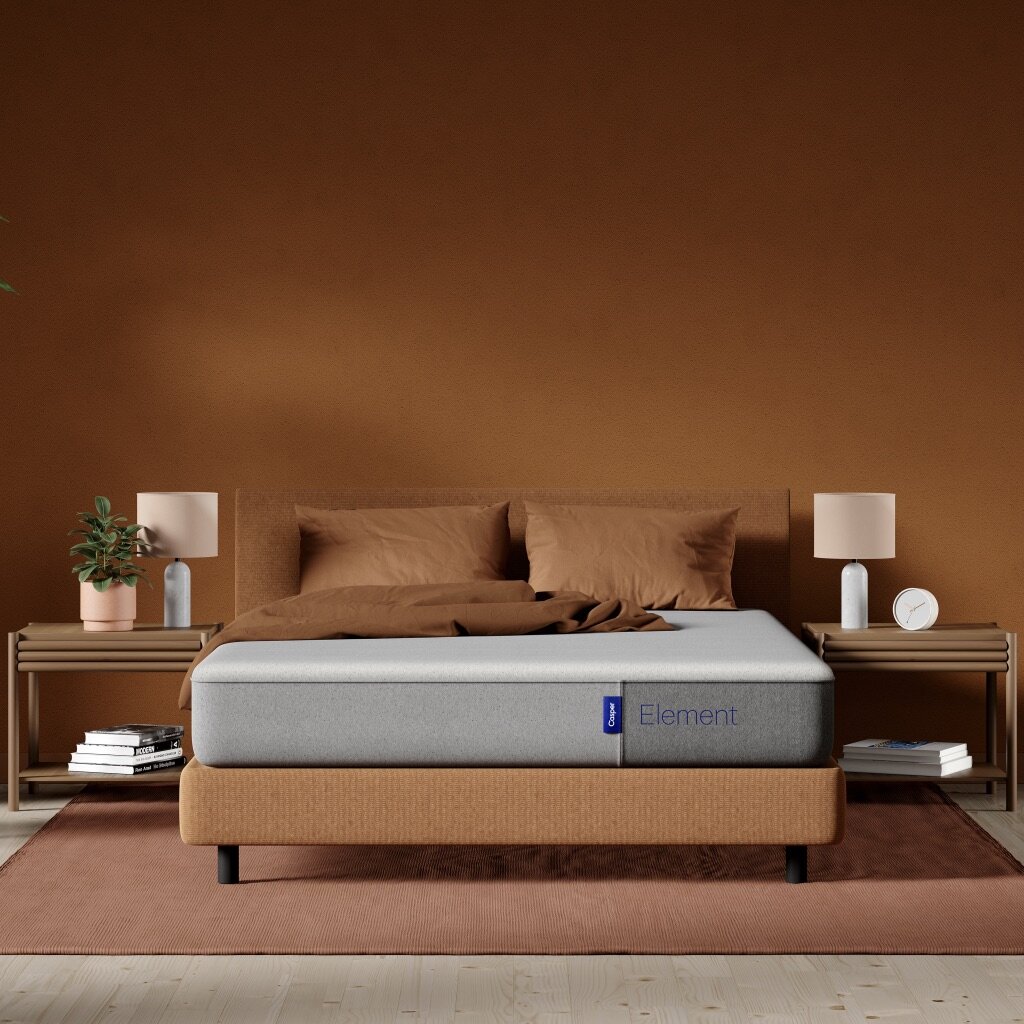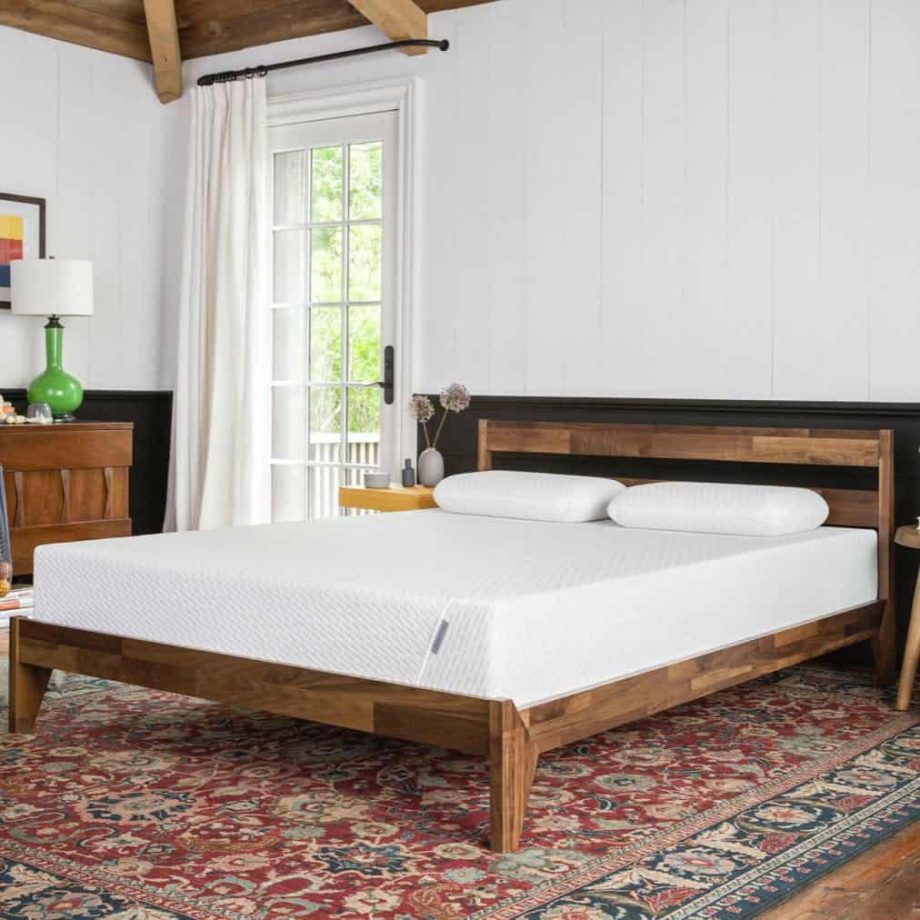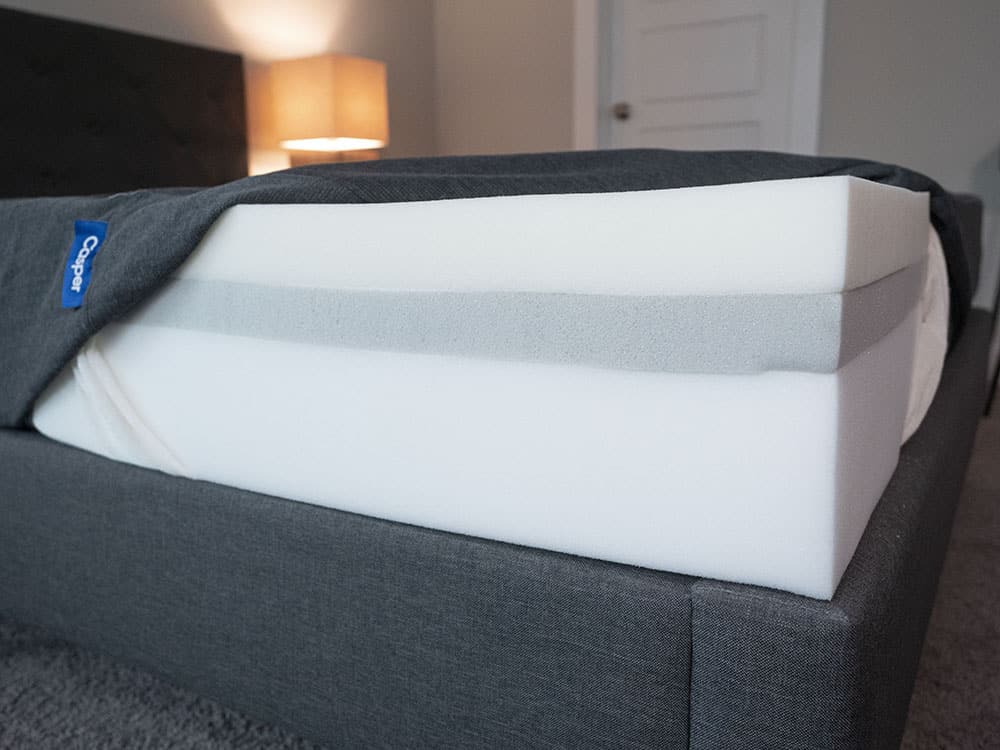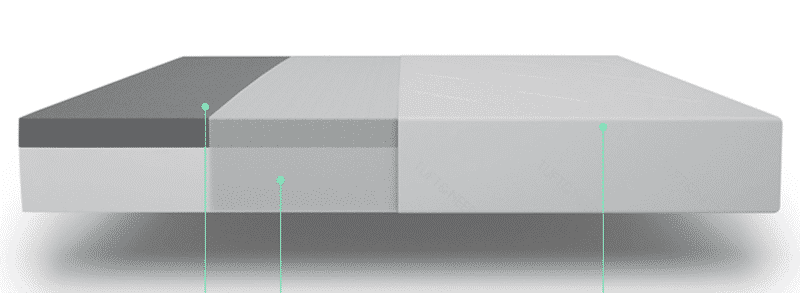Product
Firmness
Score

Product
Firmness
Score

Product
Firmness
Score
Casper Element vs. Tuft & Needle: Top Similarities
- Both are all-foam mattresses with relatively simple constructions.
- They are comparably priced ($645.00 to $1295.00 for Tuft & Needle; $595.00 to $1395.00 for Casper Element).
- Both use polyfoam and have polyester covers.
- Both have springy, responsive surfaces.
- Both offer 100-day trials and free shipping.
Casper Element vs. Tuft & Needle: Key Differences
- Tuft & Needle is thicker at 10″, while the Casper Element is only 8.5″ thick.
- Tuft & Needle will be firmer than Casper Element for most sleepers.
- Casper Element incorporates memory foam, while the Tuft & Needle has uses a proprietary foam.

Casper Element Construction
- Casper Element has a removable, soft, poly-knit cover that doesn’t affect the mattress feel too much.
- On top is 2″ of an open-celled, springy, breathable polyfoam that Casper calls “Fusion Foam.”
- The middle layer is 1.5″ of responsive memory foam, which adds pressure relief and body contouring.
- The base support layer is comprised of 4.5″ of durable support foam, which is a pretty standard foam for bed-in-a-box mattresses.

Casper Element Mattress

Product Details
Our Recommendation
Financing Options
Financing options are available for this mattress.

Tuft & Needle Construction
- Tuft & Needle has a breathable polyester blend cover that also doesn’t affect the overall feel of the mattress too much.
- The top of Tuft & Needle’s two layers is 3″ of firm, bouncy proprietary “Adaptive” foam. This is a polyurethane-based foam that incorporates graphite and a gel polymer to absorb and evenly distribute heat from the body.
- The support layer is 7″ of 1.8-lb-density poly foam, which is pretty standard on the market.

Tuft & Needle Mattress

Product Details
Our Recommendation
Financing Options
Financing options are available for this mattress.
Construction Differences and Notes
- Both are all-foam mattresses that have relatively few layers.
- Both use polyfoam somewhere in the construction.
- Tuft & Needle is firmer and also thicker.
- Casper Element uses memory foam and has one more layer.
Firmness and Feel Differences
While both have responsive top layers, Casper Element is a little softer. I would say that Tuft & Needle feels more supportive overall. That is mainly because it is thicker and firmer.Motion Transfer Differences
Because it’s softer, Casper Element has a slight edge in preventing motion transfer. However, they both did a decent job at isolating motion. Both mattresses might be a pretty good option for couples.Pick Casper Element If …
- You are a side sleeper. Casper Element conforms better to contours and is softer overall, potentially making it more appealing for side sleepers.
- You want something softer. Casper Element has a softer top layer and a memory foam middle layer that adds even more softness to the mattress.
Pick Tuft & Needle If …
- You are a back or stomach sleeper. Tuft & Needle is firmer and more supportive, potentially making it a more appropriate choice for back or stomach sleepers who need that extra support.
- You like a little firmness. If you generally prefer a stiffer mattress, Tuft & Needle will give you that feel more than the Casper Element.

